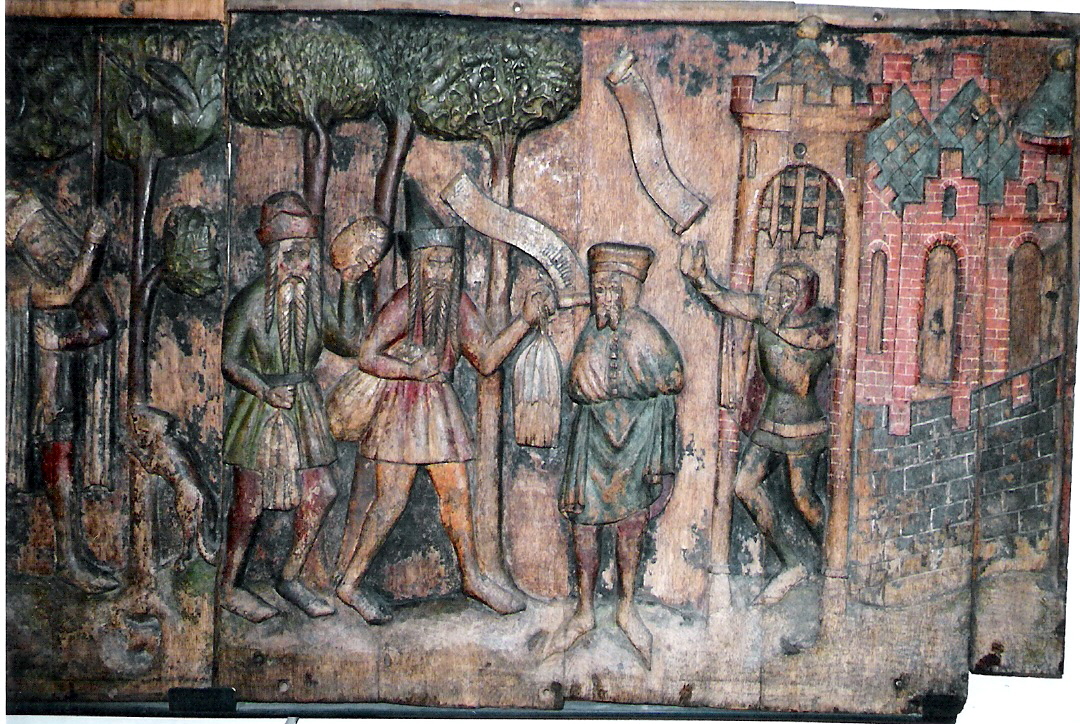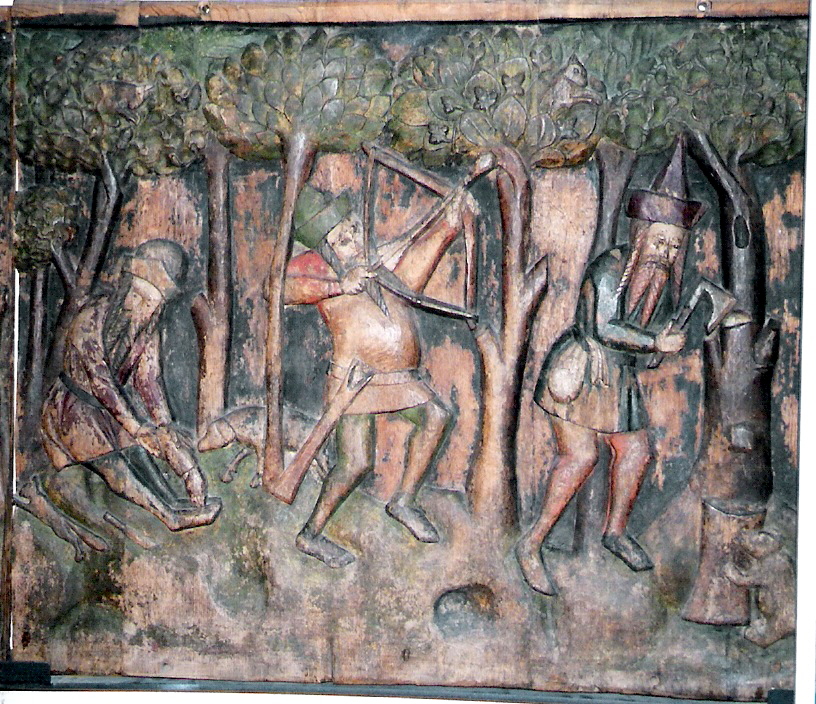
Novgorodian trade in Riga, Latvia, circa 1360, CC BY 2.5.
In the centuries prior to Tsarist Russia’s rise to power the two principal centers connecting the Viking and Byzantine worlds were Novgorod and Kiev. Generally referred to as the Kievan Rus’ – the ascendancy of Novgorod within this loosely connected riverine federation stretching between the Dnieper River and Lake Ladoga’s tributaries to the Baltic Sea began during the reign of Yaroslav the Wise (c. 978-1054) – who became Grand Prince of Kiev in 1019 after ruling Novgorod and forming alliances with Scandinavian Vikings (Varangians).
While historians often focus on the north-south relationship connecting the Baltic and Black Sea watersheds, the era of Novgorod as an independent state with its own frontier had been largely overlooked by western historians until the early twentieth century.
Established as a republic in 1136, much of the history of this former imperial city located at the crossroads of empires was written in the Old Russian Chronicle of Novgorod. Also known as The Novgorod First Chronicle, the document lauding four hundred years of conflict and achievement of a once great capital, begins in the early eleventh century and ends in 1471 after succumbing to Moscovite rule. A major theme of the Chronicle documenting Novgorodian expansion and influence from the Dnieper to the Polar Urals lies in the expression “beyond the Volok” – which roughly meant “beyond the portages” – or the regions north and east of its lucrative fur and mineral trade. Within the Chronicle the expression appears dozens of times. One example occurs in 1337 when Ivan I, the Grand Prince (Veliki Knyaz) of Moscovy threatened Novgorod while the Swedish town Nemetski Gorod (Vyborg), on the north shore of the Gulf of Finland, served as a refuge for people fleeing warring Karelians:
The same winter the Veliki Knyaz Ivan quarreled with the men of Novgorod, and he sent a force to the Dvina beyond the Volok, not remembering the kissing of the Cross, and there by the power of the Cross they were disgraced and beaten. Whoso diggeth a pit for another shall fall into it himself. […] The same winter the Korel [Karelian] people having fetched the Nemtsy, killed many Russians of Novgorod and of Ladoga, who were trading amongst them, and all the Christians who lived amongst them, and they themselves fled into the town of the Nemtsy and then slew many Christians from the town of the Nemtsy.[1]
Novgorodian Expansion to the Polar Northeast
Up until the eleventh century the primary foes contesting Novgorod for regional dominance were the Vikings of Sweden. This threat materialized on and off for generations, but when hostilities subsided, the Novgorodians were freer to expand north and east in search of valuable furs to export. This was done by using the White Sea as an outlet to sail east through arctic waters and southeast into the Northern Dvina basin. Beyond the White Sea, the Novgorodians explored the north flowing Ob River emanating from the eastern side of the Ural Mountains. Writing more than a century ago, the historian Charles Raymond Beazley attempted to pin down the date of this exploration by using a 1032 reference in the Nikon Chronicle of a Novgorodian confrontation with a Finnish tribe at an ocean pass called the “Iron Gates” – which is assumed to be the Kara Strait separating the Barents and Kara seas:
Probably about the time of the First Crusade (1096) and certainly before the second (1147) the men of Novgorod had already come into touch with the country of the Lower Ob, just beyond the Ural Mountains. Long ere this, perhaps as early as the closing years of the tenth century (950-1000), the Novgorodian pioneers seem to have penetrated into Lapland and the upper valley of the Dvina.[2]

In the mid-twentieth century the historian George V. Lantzeff noted that the location of the Iron Gates had been “disputed” but the republic’s influence likely extended into the Urals. “By the middle of the twelfth century, about thirty administrative posts were established by the Novgorodians in the territory ‘beyond the Portage’” – a vast region stretching between Lake Onega to the Pinega River near Archangel. According to Lantzeff, there was plenty of evidence to assume Novgorod’s trade network reached as far as the Pechora River west of the Urals because “in 1113 the Novgorodians paid the Prince of Kiev a ‘Pechora tribute,’ apparently a share of their spoils from this river.”[3]
[1] Robert Michell, Sir Charles Raymond Beazley, et al, The Chronicle of Novgorod, 1016-1471, (London: Offices of the Society, 1914), 130-131.
[2] Sir Charles Raymond Beazley, “The Russian Expansion Towards Asia and the Arctic in the Middle Ages (to 1500).” The American Historical Review 13, no. 4 (1908), 732. See: The Chronicle of Novgorod, 1016-1471, (London: Offices of the Society, 1914), intro xv, xxii: Chronicle of Nikon (Russkaya Lyeiopis po Nikonovu Spisku), Imperial Academy, St. Petersburg, 1767, vol. I, 132 (C.E. 1032).
[3] George V. Lantzeff, “Russian Eastward Expansion before the Mongol Invasion.” American Slavic and East European Review 6, no. 3/4 (1947), 2.
About the author
Benjamin J. Swenson has been living and working in Korea since 2008. His doctoral dissertation at Pompeu Fabra University (UPF) in Barcelona, Spain, covered Euro-American military and legal history, and the advent of guerrilla warfare and counterinsurgency doctrine in the nineteenth century. He is currently an Assistant Professor in the Department for Human Creativity at Hoseo University in Asan – where he lives with his wife and son. His hobbies include chess, painting, hiking, and bonsai.
Thanks for sharing Ben